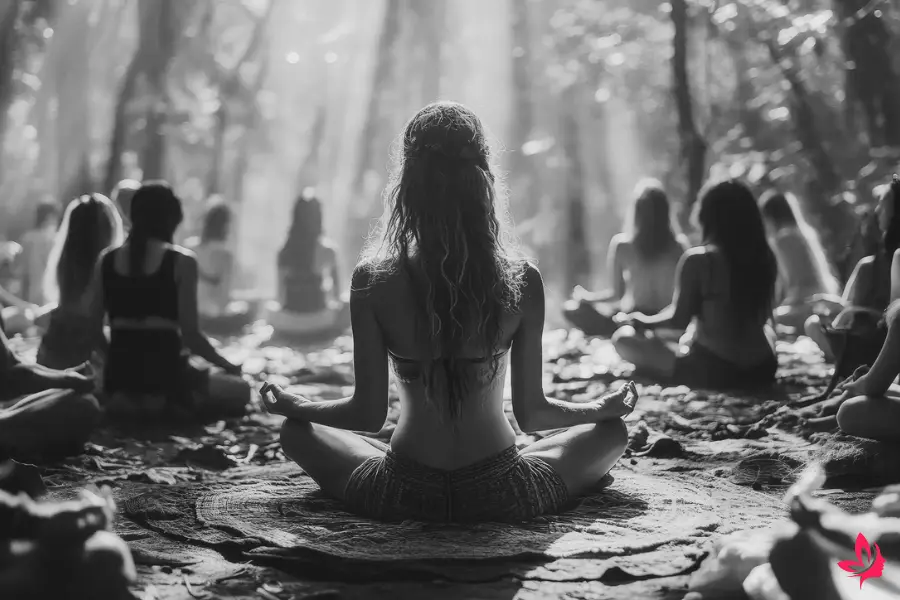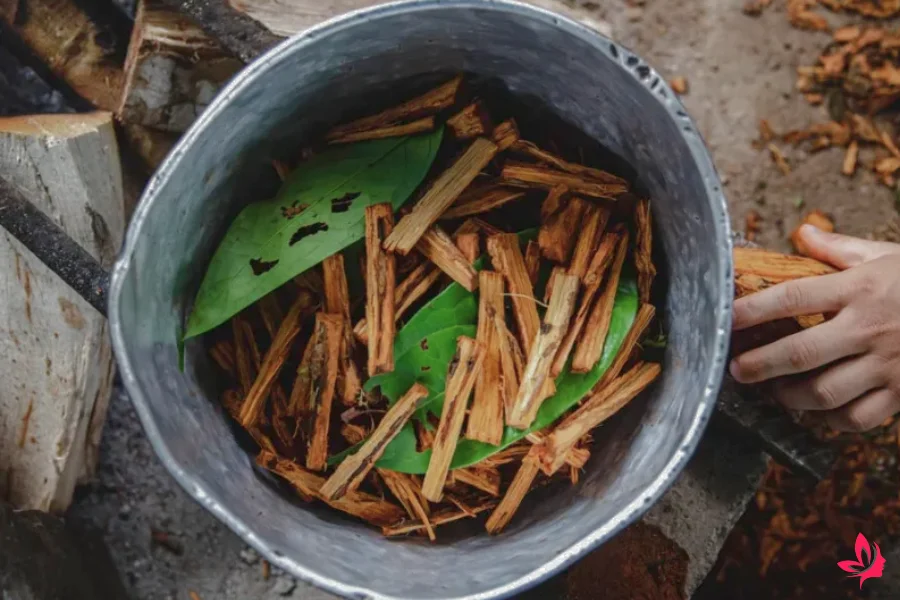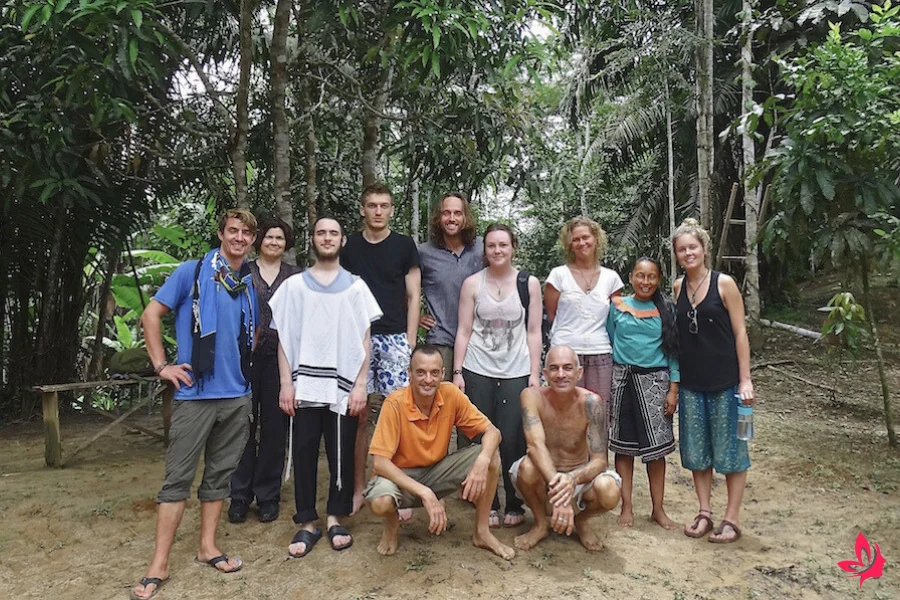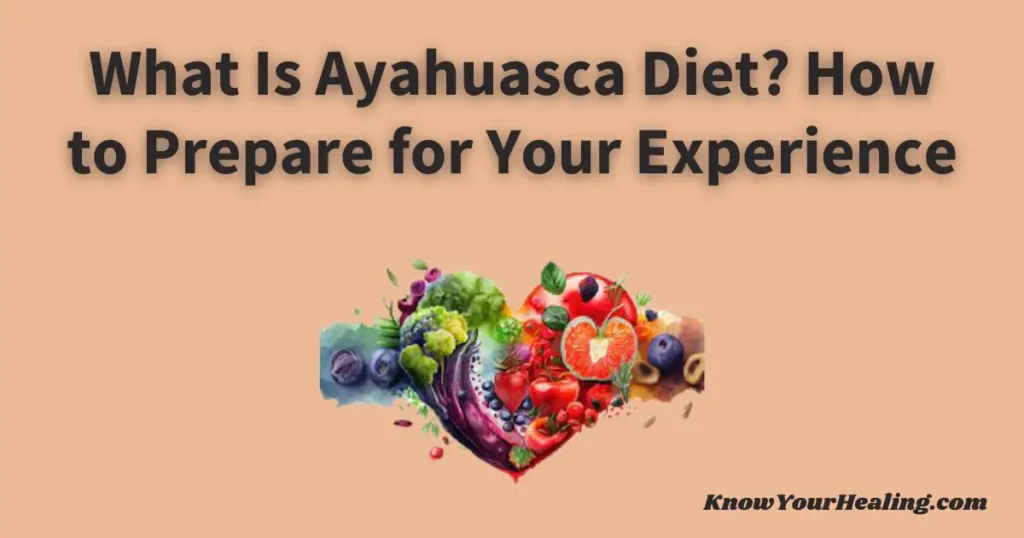How long does ayahuasca last? Many people ask this question when considering this powerful and transformative experience.
Most ayahuasca journeys last between 4 to 6 hours. The effects begin to be felt within 20 to 60 minutes after ingestion.
The intensity and length of the experience can vary depending on factors such as dosage, individual sensitivity, and the specific preparation used.
Individuals on a quest for personal insight and healing often turn to ayahuasca ceremonies.
Knowing what to expect regarding duration can help set the right mental frame and prepare people emotionally.
By understanding the typical timeline of an ayahuasca experience, participants can focus more on the inner journey and less on time-related distractions.
Timing is crucial for those seeking a smooth and meaningful session with ayahuasca.
With peak effects occurring after 1 to 2 hours, participants must know how the timeline may influence their experience.
Understanding these time frames allows participants better to plan their participation and expectations during the ceremony.
Understanding the Duration of an Ayahuasca Trip

Various factors, including the specific setting and preparation methods, influence the duration of an ayahuasca trip.
A typical experience involves a complex timeline that can vary significantly between different ceremonies and environments.
By examining these variables, one can better understand how long ayahuasca lasts.
Factors Influencing How Long Ayahuasca Lasts
Several factors affect how long an ayahuasca journey endures.
First, monoamine oxidase inhibitors (MAOIs) are crucial in the Banisteriopsis caapi vine. These compounds slow down the breakdown of the primary psychoactive ingredient, allowing effects to persist longer.
Individual physiology also influences duration. Metabolism, body weight, and overall health can alter how quickly one processes the brew.
Additionally, the amount ingested and whether it’s taken on an empty stomach significantly impact the duration of the effects.
The setting is another key factor.
Ayahuasca ceremonies in traditional environments like the Amazon rainforest might create a longer, more intense experience, often accentuated by the guidance of indigenous leaders and ceremonial practices.
These can shape the psychological dimension of the trip, affecting its perceived length.
Typical Timeline of an Ayahuasca Experience
The journey often begins with the onset of effects occurring 20 to 60 minutes after consumption.
Subtle changes in perception and mood mark this initial period.
The peak, generally reached after 1 to 2 hours, can last 2 to 4 hours.
Users might experience vivid visions, emotional insights, and a deep connection to their surroundings during this time.
After the peak, the intensity gradually decreases, with lingering effects lasting up to 8 hours in some cases.
These include a lingering altered state of consciousness and introspection.
Some mild aftereffects may extend for several days, often involving both transformative and negative effects.
How Long Does Ayahuasca Last in Different Settings?
In different settings, the duration of an ayahuasca trip can vary.
Ayahuasca retreats, often situated in the Amazon jungle or South America, offer trips of 4 to 6 hours, which is the average duration reported in more formal settings.
These environments immerse individuals in the experience, enhancing both the psychological depth and perceived length of the journey.
Conversely, gatherings without the same cultural context might result in a shorter or less profound experience.
The presence of ceremonial elements, like indigenous rituals, can extend the duration of perception and effect.
It’s worth noting that differences aren’t solely due to locale; the facilitator’s experience and preparation method also influence the journey’s length.
Effects of Ayahuasca: Short-term and Long-term

Ayahuasca, a psychedelic brew, is known for its intense and transformative effects.
While an ayahuasca journey typically lasts 4-6 hours, its impact can be immediate and extended.
The brew, made primarily from the Banisteriopsis caapi vine and the leaves of the Psychotria viridis shrub, plays a crucial role in indigenous ceremonies.
Immediate Effects During an Ayahuasca Ceremony
During an ayahuasca ceremony, participants often experience powerful psychotropic effects.
These effects generally begin within 20-60 minutes after consumption and peak between 60 and 120 minutes, lasting about 4-6 hours.
Participants might feel intense visual and auditory hallucinations that alter their perception of reality. There is a noticeable shift in awareness and a strong sense of introspection.
Some individuals report variations in their sense of time, body sensations, and out-of-body experiences.
The presence of monoamine oxidase inhibitors (MAOIs) in the brew significantly influences these experiences by allowing the psychoactive compounds to remain active longer.
Long-term Effects of Ayahuasca Use
Long-term effects of ayahuasca use can include positive mental health outcomes, such as improved emotional well-being and a sense of spiritual fulfillment.
A significant reduction in symptoms of depression and anxiety has been observed in some individuals.
According to research, regular participation in ayahuasca ceremonies might enhance cognitive functioning and increase mindfulness in daily life.
Indigenous cultures across South America recognize the brew’s transformative effects, and it has been used for centuries as a tool for healing and personal growth.
It’s important to note that while some studies highlight these benefits, individual experiences can vary widely.
Potential Negative Effects and Risks
Despite its potential benefits, ayahuasca also carries risks and adverse effects.
Participants might experience nausea, vomiting, increased heart rate, and higher blood pressure during or after their trip.
These physical reactions are sometimes considered part of the cleansing process in indigenous traditions, but they can be unsettling for some.
Psychologically, individuals may encounter challenging emotional states or frightening hallucinations.
Such negative experiences underscore the importance of participating in a guided ayahuasca retreat with trained facilitators or indigenous leaders who understand how to navigate these complex processes safely.
Ayahuasca should not be taken lightly, as improper use can lead to adverse reactions, especially when mixed with certain medications or mental health conditions.
Cultural and Historical Context of Ayahuasca

Ayahuasca, a powerful psychedelic drug, has deep cultural roots and a long history. Its use has evolved from a traditional spiritual practice among indigenous people to modern ayahuasca retreats and ceremonies, attracting global interest.
The brew’s components, including the Banisteriopsis caapi vine, are critical to its effects.
Indigenous People and the Origins of Ayahuasca
Indigenous people in the Amazon rainforest have used ayahuasca for centuries.
The word ayahuasca, meaning “vine of the soul, ” comes from the Quechua language. Tribes such as the Shipibo-Conibo and Asháninka have played a crucial role in preserving this tradition.
They rely on ayahuasca tea for spiritual guidance and healing.
The use of ayahuasca is integral to daily life in these communities.
It is often consumed in ayahuasca ceremonies led by indigenous leaders who oversee the ritual.
These ceremonies typically occur at night; participants believe they can connect with spiritual realms.
Preparations involve boiling the Banisteriopsis caapi vine and leaves of the Psychotria viridis shrub to create a potent, brown-reddish drink with a strong taste.
Ayahuasca in Modern Times: Retreats and Ceremonies
Modern ayahuasca retreats have gained popularity worldwide, attracting visitors from far beyond South America.
These retreats offer a structured environment for participants to undergo the ayahuasca experience. They emphasize safety and guidance during the journey, with trained facilitators providing support.
People attend these retreats seeking transformative effects, hoping to find insights into mental health conditions or achieve a spiritual awakening.
While some report positive experiences, others may endure a negative experience due to intense emotional or physical reactions.
Proper care and setting are crucial to mitigate potential adverse effects, such as fluctuations in heart rate or blood pressure.
The Botanical Aspects of Ayahuasca
The botanical composition of ayahuasca is essential to its effects.
The Banisteriopsis caapi vine contains ingredients that act as monoamine oxidase inhibitors (MAOIs).
These MAOIs are crucial for allowing the psychoactive compounds from the leaves of the Psychotria viridis shrub to produce their effects.
The duration of an ayahuasca journey typically lasts between 4 to 6 hours, but some experiences may extend up to 8 hours due to the variable presence of MAOIs in the brew.
Understanding these botanical elements helps explain the intensity and length of an ayahuasca trip. This source provides further insights into the duration of an ayahuasca trip.
Legal Status of Ayahuasca in The US
Below is a table summarizing the legal status of ayahuasca in different states of the US as of Apr. 2025. Please note that the legal landscape can be complex and subject to change.
| State | Legal Status | Notes |
|---|---|---|
| Alabama | Illegal | No known exemptions. |
| Alaska | Illegal | No known exemptions. |
| Arizona | Illegal | No known exemptions. |
| California | Decriminalized in some cities (e.g., Oakland, Santa Cruz) | State law still considers it illegal. |
| Colorado | Decriminalized in Denver | State law still considers it illegal. |
| Florida | Illegal | No known exemptions. |
| Georgia | Illegal | No known exemptions. |
| Hawaii | Illegal | No known exemptions. |
| Illinois | Illegal | No known exemptions. |
| Massachusetts | Decriminalized in some cities (e.g., Cambridge, Somerville, Northampton) | State law still considers it illegal. |
| Michigan | Decriminalized in some cities (e.g., Ann Arbor) | State law still considers it illegal. |
| New York | Illegal | No known exemptions. |
| Oregon | Decriminalized statewide | Still regulated; use with caution. |
| Texas | Illegal | No known exemptions. |
| Washington | Decriminalized in some cities (e.g., Seattle) | State law still considers it illegal. |
| Washington D.C. | Decriminalized | Still regulated; use with caution. |
| Other States | Illegal | No known exemptions. |
Final Thoughts
How long does ayahuasca last? The duration typically ranges from 4 to 8 hours, with effects starting about 20 to 60 minutes after ingestion. Individuals may experience various emotional, psychological, and physical effects during this time.
The intensity of the experience often peaks after about 60 to 120 minutes from consumption. This can be influenced by factors such as dosage, individual physiology, and the environment in which ayahuasca is taken.
It is crucial to be prepared for some common physical side effects.
These might include nausea, vomiting, and diarrhea, which are part of traditional cleansing processes.
The aftermath of a session can leave users needing a couple of days to recover their physical energy and integrate their experiences.
Some people may find this recovery period necessary to return to regular eating and sleeping patterns.
Key Takeaways
- Duration: 4 to 8 hours
- Onset: 20 to 60 minutes
- Peak Intensity: 60 to 120 minutes post-consumption
- Common Physical Effects: Nausea, vomiting
- Recovery: A few days for energy restoration
How one responds to ayahuasca can widely differ, so it’s crucial to approach it with care and mindfulness.
Frequently Asked Questions
Ayahuasca, a traditional plant-based brew, can have varying effects and duration depending on several factors. The experience of an ayahuasca journey typically ranges from hours of active effects to potential long-term impacts on the mind and body.
How long does the ayahuasca effect last?
The effects of ayahuasca usually last between 4 to 6 hours. Initial effects can begin within 20 to 60 minutes, with peaks occurring 1 to 2 hours later.
How does ayahuasca change you?
Ayahuasca can lead to deep introspection and emotional release. Those who use it might report changes in perception. They might also experience increased personal insight and altered moods.
How long does ayahuasca last in your system?
The immediate effects wear off after several hours. However, ayahuasca can remain detectable in the body for a few days after consumption.
What are the long term effects of ayahuasca?
Some people experience a lasting sense of psychological openness and increased mindfulness. They might also feel an appreciation for nature for months after the experience. It is vital to approach ayahuasca with caution and intention.
Why is ayahuasca illegal?
Ayahuasca contains DMT, a substance that is illegal in many countries due to potential abuse. Legal status varies, and it is often restricted because of its psychoactive properties.
Does ayahuasca change your brain?
There is evidence that ayahuasca might alter brain activity temporarily. It can also potentially affect serotonin levels and neural connectivity. These changes are generally not permanent but warrant careful study due to their complexity.
How do you feel the day after ayahuasca?
The day after using ayahuasca, individuals might feel fatigued or introspective. Some report a sense of clarity and peace, while others feel emotionally drained.
Can ayahuasca cause a psychotic break?
Although rare, there is a risk of triggering mental health issues, including psychosis. This is especially true for those with a family history or pre-existing conditions.
Does ayahuasca cause memory loss?
There is limited evidence that ayahuasca causes memory loss. Users might experience temporary confusion during the effects, but it does not typically impair long-term memory.
What are the stages of ayahuasca?
The ayahuasca experience typically includes stages of ingestion, onset of effects, peak experience, and come down. Each stage can vary widely in intensity and duration for different individuals.




